Wisconsin's Covid Condition: Omicron ascent persists as health efforts turn to kids
The number of new COVID-19 cases is hitting record levels while deaths are at their highest in over a year as the variant surge continues building, with state officials focusing on promoting vaccinations, tests and masks among children to curb transmission and keep schools open.
By Will Cushman
January 21, 2022
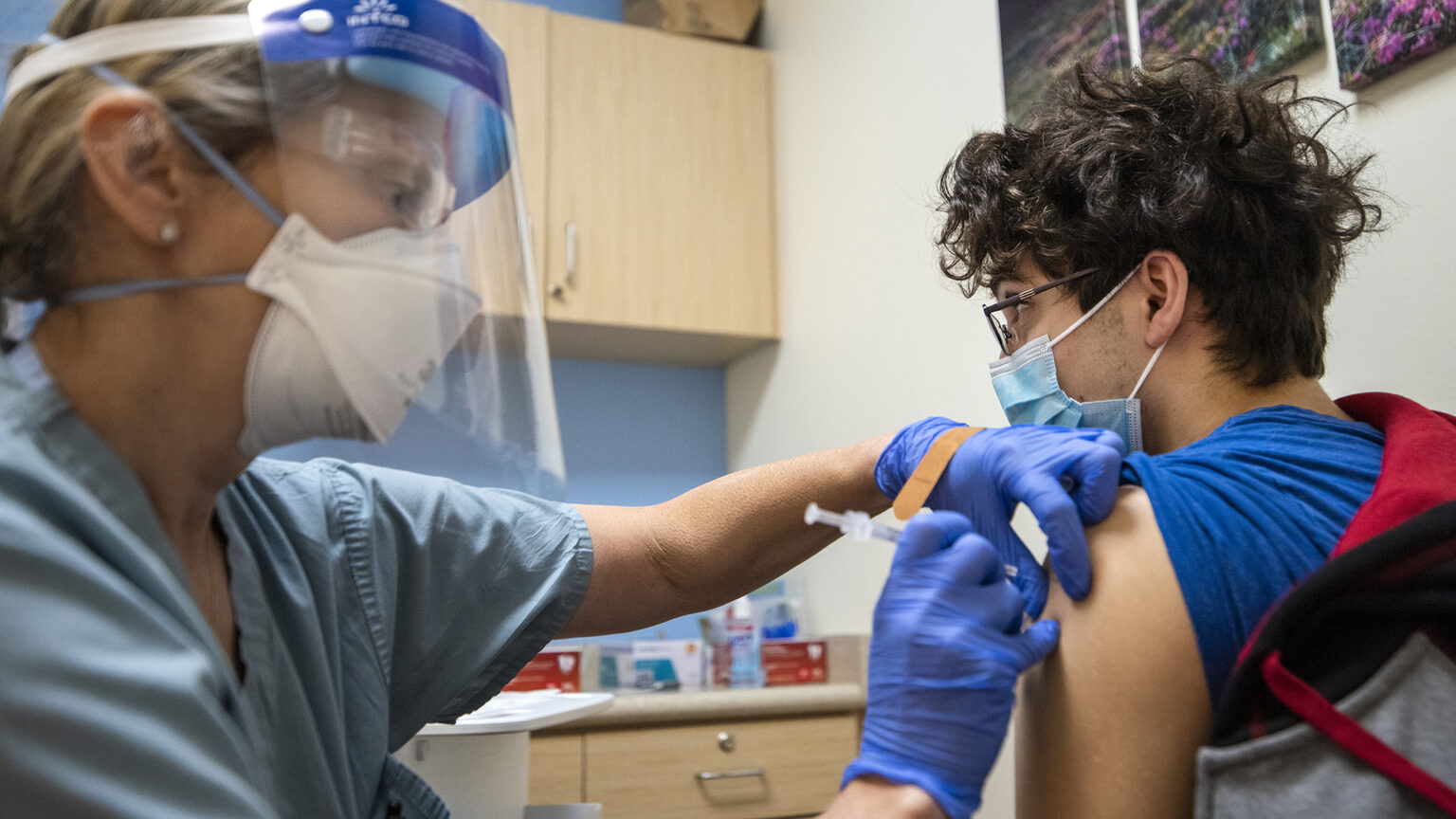
Peter Cordes, 14, receives a COVID-19 booster shot from Sally Johannsen on Jan. 10, 2022, at a Public Health Madison & Dane County clinic in Madison. Emphasizing the benefits of vaccines, Johannsen said, "people thank us but I thank you." (Credit: Angela Major / Wisconsin Public Radio)
Wisconsin health officials are warning that the omicron surge of COVID-19 has yet to hit its highest peak. The variant continues to drive record growth in new cases across the state, though hospitalizations have started to level off. At the same time, newly reported deaths attributed to COVID-19 are at their highest level in more than a year.
State data continues to demonstrate a wide gulf in hospitalizations and deaths between vaccinated and unvaccinated Wisconsinites. As this year-long divergence persists, officials persist in promoting the benefits of vaccinations, along with higher-quality masks and testing, for children in a campaign aimed at keeping schools safely open and functioning amid the omicron surge. Here’s the status of the COVID-19 pandemic in Wisconsin.
Record cases, high hospitalizations and a jump in deaths
The unrelenting spread of the omicron variant pushed Wisconsin’s COVID-19 case counts to new heights in January 2022, according to data published by the Wisconsin Department of Health Services. The state’s 7-day average for new cases rose to 18,836 on Jan. 19, a level more than double that reported two weeks earlier.
One caveat: The spike in case counts was somewhat elevated over several days after the state health department automated a step in its disease reporting process. New case reports now bypass a step where local health departments could review and prioritize them for contact tracing prior to forwarding them to the state.
Thanks to the quickly spreading omicron, a growing backlog of case reports stuck in this step prompted the change, according to Traci DeSalvo, director of the state health department’s bureau of communicable diseases. DeSalvo said the backlog extended back about two weeks, and clearing it temporarily inflated case counts reported between Jan. 14-17. That change contributed to a daily record of more than 35,000 new cases reported on Jan. 17.
However, daily case counts remained exceptionally high even after the backlog cleared, with more than 15,000 new cases reported on Jan. 19.
During a Jan. 20 media briefing, health officials said that while the omicron surge had perhaps peaked in some other parts of the United States, that was not yet the case in Wisconsin.
“The data that we have for Wisconsin does not indicate that we’ve reached the peak,” said Dr. Ryan Westergaard, the state health department’s chief epidemiologist for communicable diseases.
The rapid crush of disease pushed COVID-19 hospitalizations to record levels earlier in January, though statewide admissions leveled off and even declined slightly as the latter half of the month started, according to the Wisconsin Hospital Association. The small dip was largely driven by falling hospitalization rates in its southeast and south-central Wisconsin regions, encompassing metro Milwaukee and Madison, respectively. However, hospitalizations continued to increase in the northeast, Fox Valley and north-central Wisconsin regions.
The ongoing surge is pushing newly reported deaths from COVID-19 to their highest levels in more than a year. As of Jan. 19, Wisconsin’s 7-day average for new deaths stood at 33, higher than at any point since late 2020. The COVID-19 death rate among Wisconsinites who were not fully vaccinated was 14 times higher than among those who were fully vaccinated in December 2021. Meanwhile, multiple reports from the Centers for Disease Control and Prevention show that booster shots have significantly cut the risk of severe disease during the omicron wave.
Renewed focus on children
On Jan. 20, the state announced a public information campaign aimed at keeping schools safely open. The omicron wave has disrupted classrooms around Wisconsin as school districts contend with large covid outbreaks among students and staff amid a shortage of everything from bus drivers to substitute teachers.
The campaign centers around improving COVID-19 vaccination rates among children, encouraging the use of higher-quality masks and ensuring access to testing.
While new cases have risen among all age groups during the omicron wave, the rise has been steepest among children under 18, according to state data. Vaccination rates among children also continue to lag behind adults. As of Jan. 20, fewer than one in four children ages 5 to 11 had received at least one dose, compared to more than half of Wisconsinites ages 12 to 24, and higher rates among older age groups.
While children generally experience milder covid symptoms than older adults, they are still at risk of serious symptoms requiring hospital care. More than 2,000 Wisconsinites younger than 20 have been hospitalized with COVID-19 since the start of the pandemic. From Jan. 12-18, 2022, 75 children ages 18 and younger were hospitalized with COVID-19 in Milwaukee County alone, according to county health officials.
“There is a growing body of research that is showing that COVID-19 has serious long-term effects on our children,” said Dr. Jasmine Zapata, a pediatrician and the state health department’s chief medical officer for community health, during the Jan. 20 media briefing. Zapata cited the effects of long covid in children, along with an increase in diabetes diagnoses among children and adolescents following a bout of COVID-19.
“From a chronic disease prevention standpoint, it’s very, very important that we keep our kids safe and healthy,” Zapata said.
In addition to getting vaccinated, state health officials are encouraging the use of high-quality respirator-style masks, including N95s and KN95s, when they are available. Throughout January, nonprofits and local health departments have distributed hundreds of thousands of these masks for free in Wisconsin communities including Milwaukee, where the city council reinstated a local mask mandate on Jan. 18.
The University of Wisconsin-Madison is distributing free N95 masks for faculty, staff and students returning to campus as the spring semester is set to start Jan. 24. UW-Madison researchers in January highlighted their efforts to develop a universal coronavirus vaccine that could protect against all future variants, as well as a study indicating that the omicron variant indeed causes less severe disease in lab animals.
Free rapid antigen tests are also available on the UW campus at the same time the federal government has started distributing up to four free at-home tests per household across the nation while mandating that health insurance providers cover the cost of up to eight rapid tests per month.
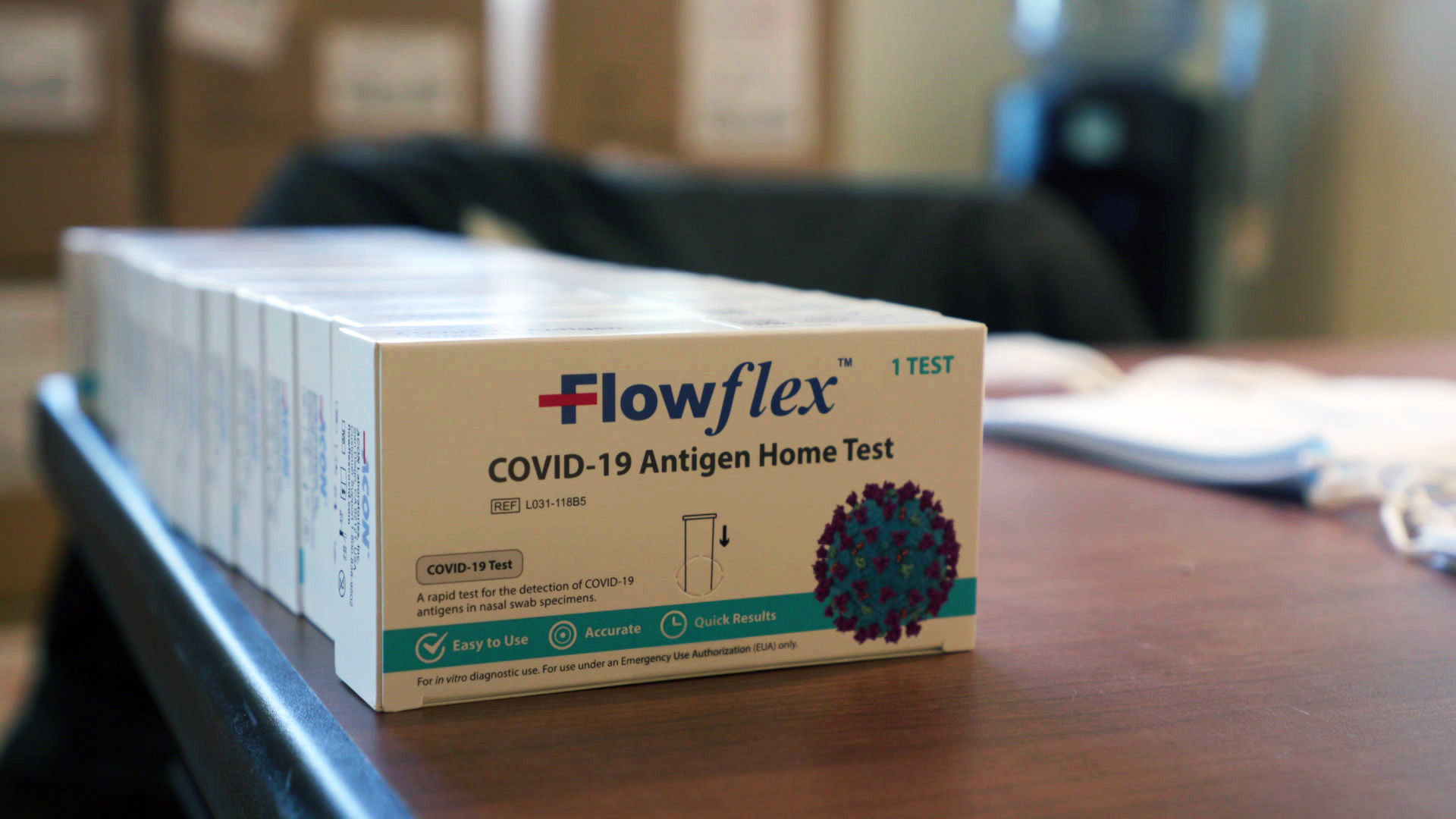
Distributing COVID-19 home tests to students and staff is among the preventive measures UW-Madison is taking as its spring 2022 semester begins. (Credit: PBS Wisconsin)
The strategies state health officials outlined — being up to date on vaccinations, wearing high-quality masks and getting tested when sick — are just as important in the days and weeks after the omicron wave peaks in Wisconsin as they have been on its upswing, Westergaard said.
“We can get that decline to happen quicker if we implement all of the prevention strategies … that we’re talking about to try to stop transmission as much as we can,” he said.
 Passport
Passport




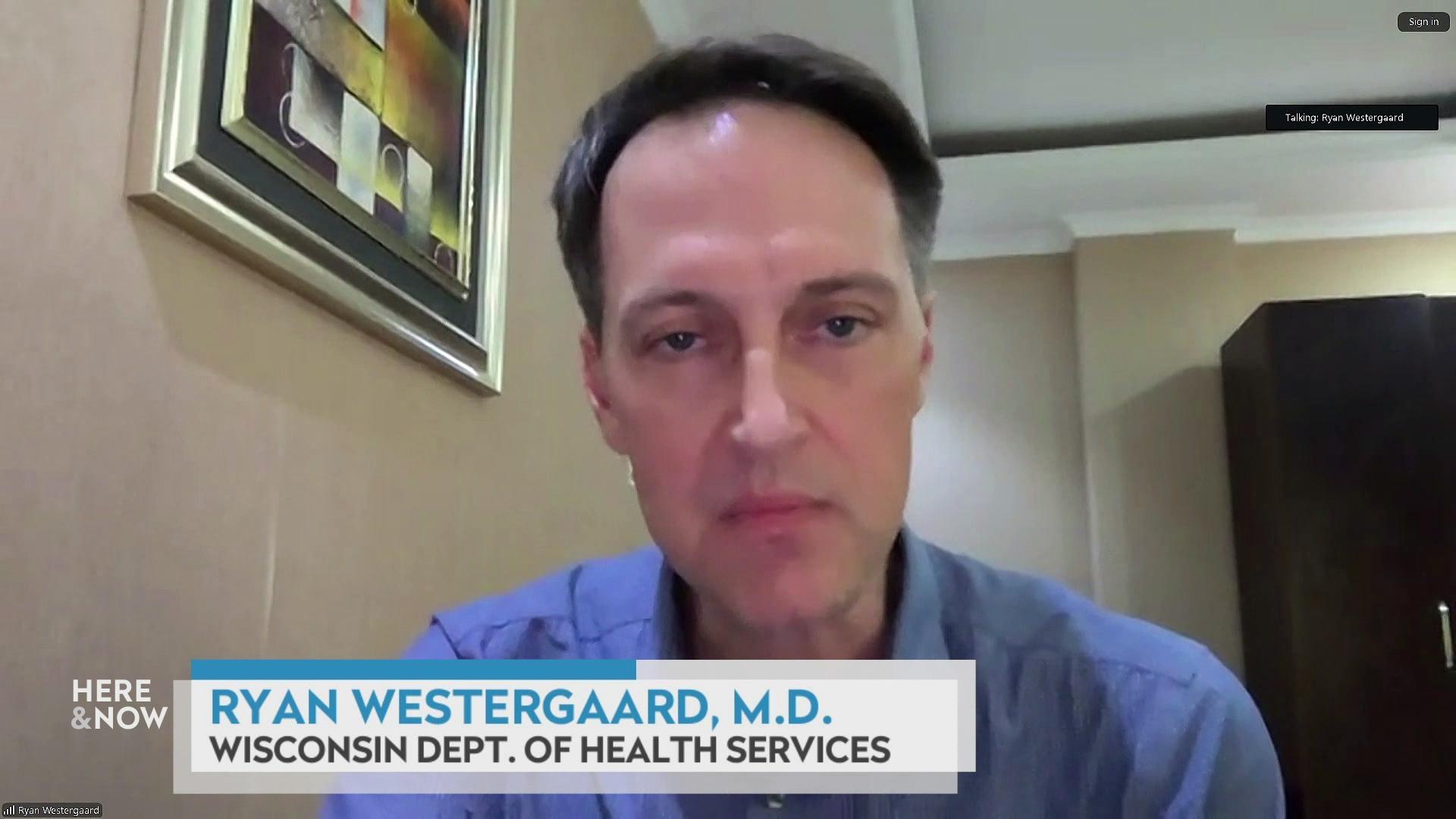
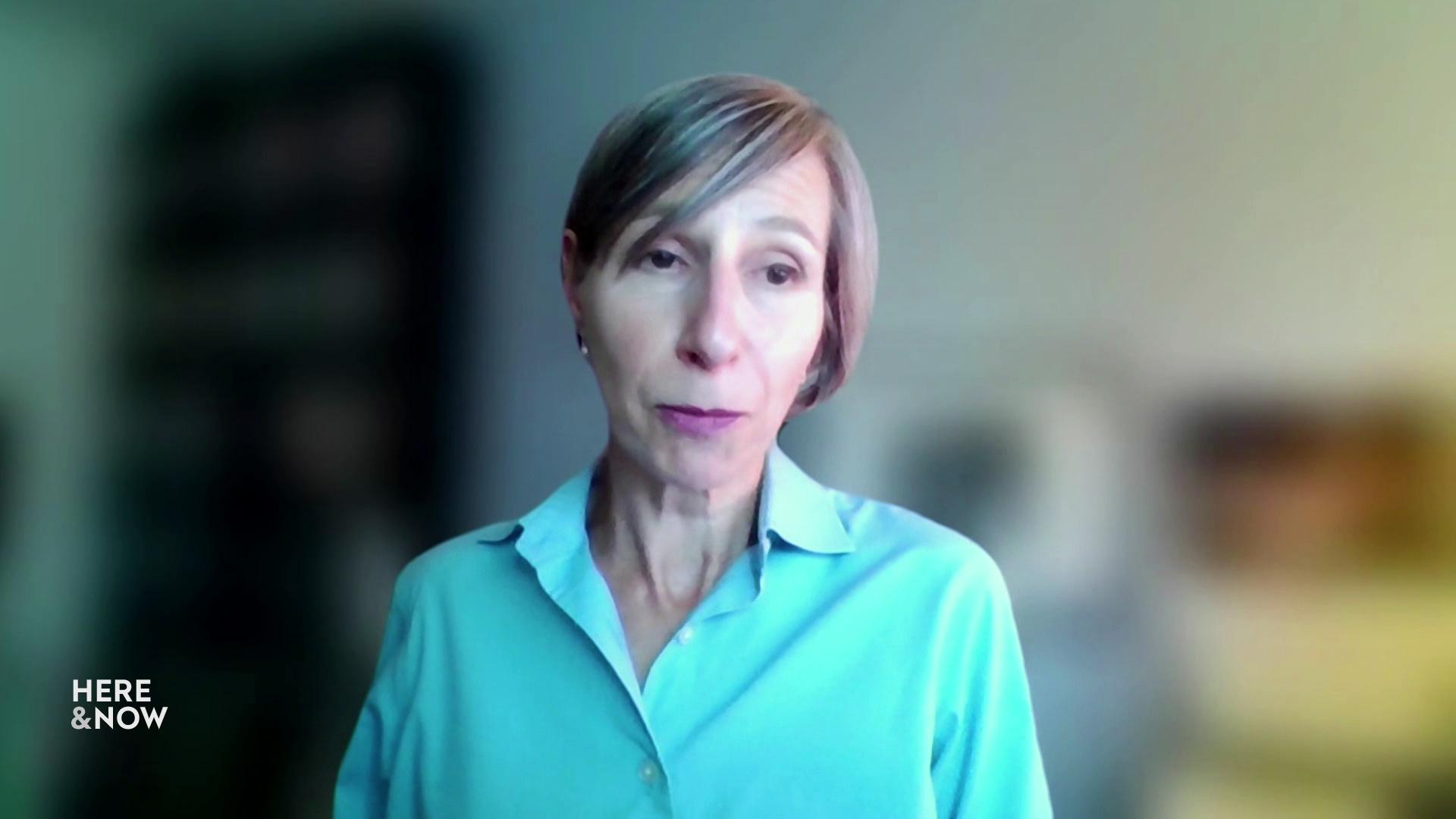
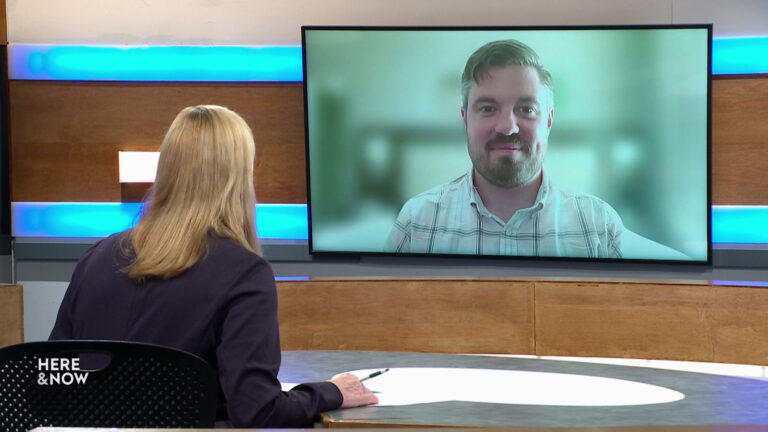
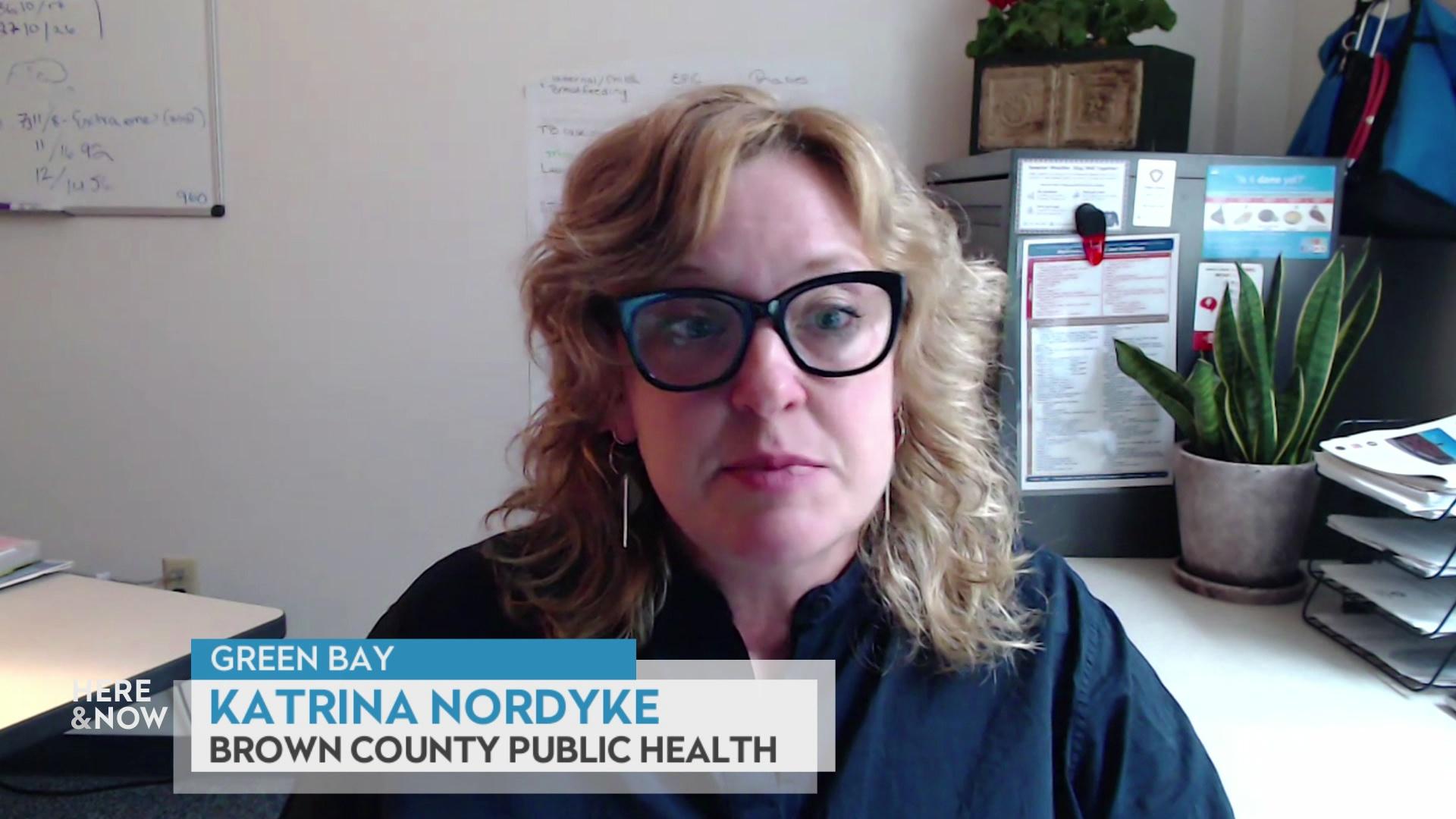
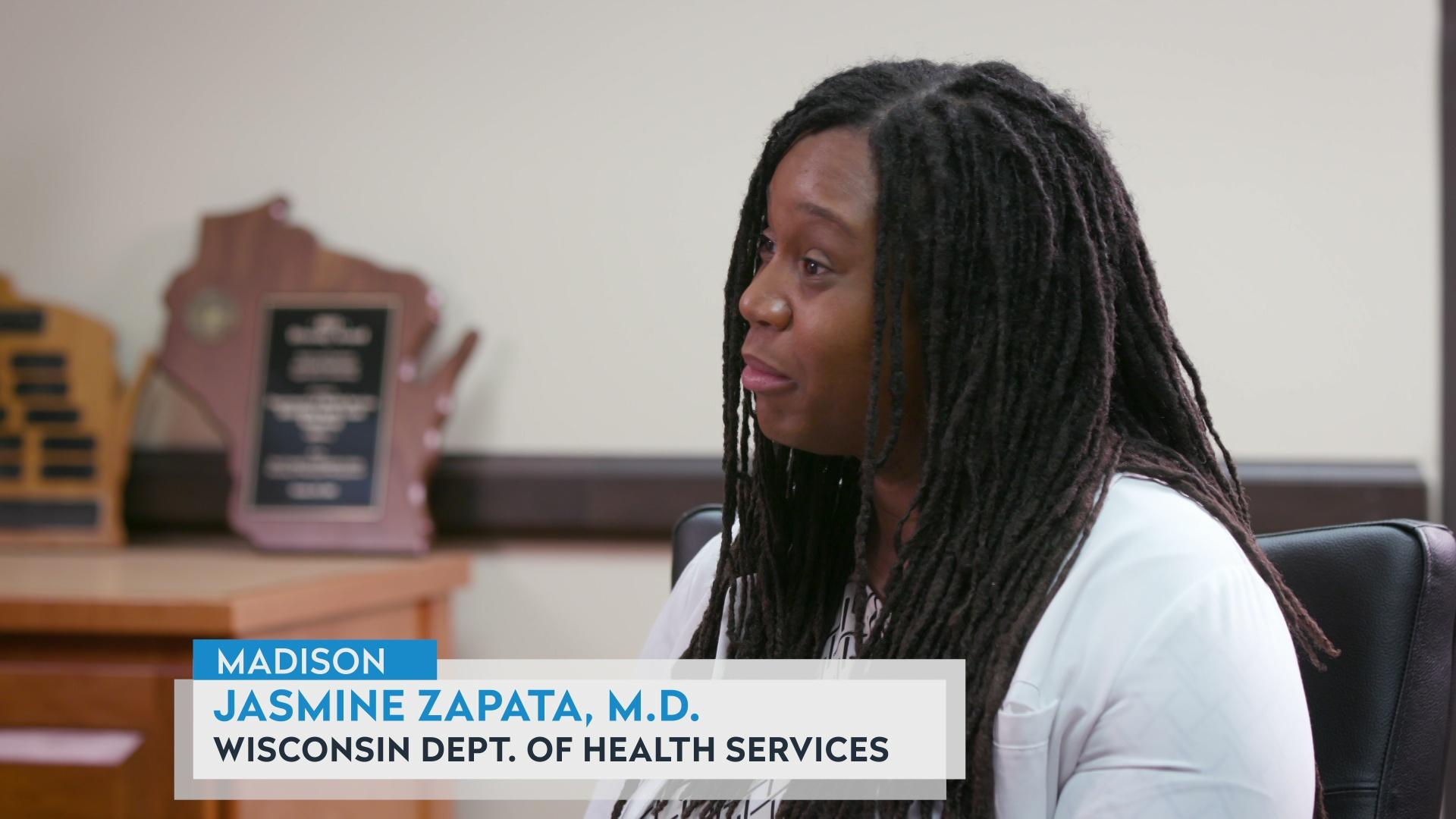
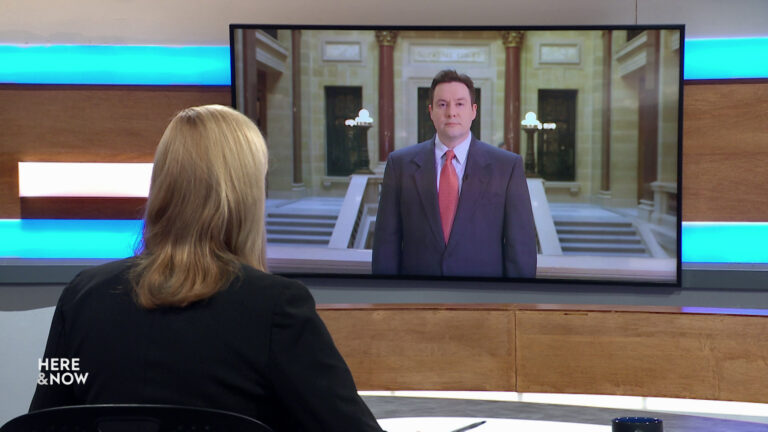

Follow Us